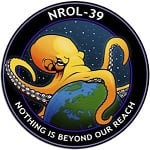So I know that pi is the ratio of a circle’s circumference to its diameter (and the ratio of r³x4/3 to the volume of a sphere).
Apparently even the circumference of the universe needs less than 40 decimal places to be more accurate than we would ever need to worry about.
So my question is, how do we determine the decimal points beyond this? If pi is a ratio and even the largest conceived circle only gets you to ±36 places, how do we determine what the subsequent numbers are?
You’re right that using geometry and ratios is only good for a few digits of π. Some ancient mathematicians used to draw polygons on the inside and the outside of a circle, and then use the circumferences of those polygons as an upper or lower limit on what π was. Archimedes approximated π as being between 223/71 and 22/7, using 96-sided regular polygons.
The real breakthroughs happened when people realized certain infinite series converge onto π, where you add and/or subtract a series of smaller and smaller terms so that the only digits of the sum that changes with each additional term are already way to the right of the decimal point.
The Leibniz formula, proven to converge to π/4, is 1 - 1/3 + 1/5 - 1/7 + 1/9 - 1/11 . . .
So if you have a pen and paper, you can add and subtract each one in sequence, and eventually they get really small to where you’re adding and subtracting numbers so small that it leaves the first few digits untouched. At that point you can be confident that the digits that can’t change anymore are the right digits.
Later breakthroughs in new formulas made much faster convergences, so that you didn’t have to make as many calculations to get a few digits. And computers make these calculations much, much faster. So today the computer methods generally use the Chudnovsky algorithm that spits out digits of 1/π, which can easily be converted to digits of π itself.
Leibnitz formula for example:
1 - 1/3 + 1/5 - 1/7 +1/9 - … = π/4
The more terms you bother with the more accurate you’ll get.
That’s numberwang!
If you don’t care about the digits of pi being in base 10, there’s also a formula that can be used to calculate digits at any position you want in hexadecimal without having to compute the preceding ones!
There’s plenty of information on wikipedia about different functions and algorithms. Also check out Numberphile on youtube, they have several videos about the topic.
Or wait for someone who actually knows their math to explain it on here, I’m not one of them.
Better would be the page of the Chronology of the computation of Pi:
https://en.wikipedia.org/wiki/Chronology_of_computation_of_π
Veritasium Video: https://www.youtube.com/watch?v=gMlf1ELvRzc
One thing to be aware of is that if you actually made a circle and measured its radius and circumference you wouldn’t get pi. Not because your measurements would be off, but because the universe does not follow the assumptions mathematicians used to define pi—namely Euclidean geometry. Pi is mathematical, not physical. If real circles and real diameters don’t give you pi that is a problem for the universe, not a problem for mathematics.
Wat?
The universe is non-Euclidean, so no circle made in the actual geometry of the universe actually has the ratio of pi between its circumference and diameter.
Is that the part you are confused about, or did I write something else badly?
[finding people who don’t know that we live in non Euclidean space these days is like finding people who think the sun goes round the earth. But I guess if people can’t be bothered to learn 350 year old mathematics, they also can’t be bothered to learn 100 year old physics. Oh well.]
The universe being non euclidian needs some extraordinary evidence.
It’s true! I just drew a circle and measured it. Turns out π≈5.
From your measurement of pi, we can deduce that you live in an anti-de Sitter space, so all the string theorists will now be sending you emails to test out their theories.
Overly snarky response: Uhhhm. Have you been asleep since, what, 1915 or something? We have extraordinary evidence, and everyone has accepted it, in so far as I know.
Less snarky response: the path on which light moves is the universes instantiation of a straight line. It is “the (locally) shortest path between two points”, the same definition you learned in geometry class. Yet in our universe, two straight lines can intersect each other twice. This is because our universe has at least some local curvature, meaning it is locally non Euclidean. In order to have a mathematically perfect circle you would need to live in a universe without any matter or energy, and with certain other properties.
Meh, spacetime curvature has so little effect that it actually does come down to measurement accuracy. And if you go to the scale of the whole universe it is flat as far as we currently know.
Now I wonder how LISA will handle curvature changes due to sun, earth and moon moving around, or if they won’t make enough of a difference.
I mean, geodetic interferometers already exist and can measure very small deviations. Give them arms the length of the observable universe and they will increase in accuracy, not decrease in accuracy.
If you constructed a circle with the radius of the universe, then measured its circumference and radius measurement accuracy would easily be able to tell the difference between a real circle and a mathematical circle. That is because neither the perimeter of circle will nor the diameter of the circle will be through in empty space. They will be near enough to matter to measure detectable deflections.
deleted by creator
Lol. Math. The answer is math, and it’s not even complicated math.
Practice practice practice!
How do people calculate pi
They don’t.
Pi is well known, up to many more than hundred digits. People memorize it, or look it up, but they don’t need to calculate again (unless they want to go to extremes).
Pi is well known, up to many more than hundred digits.
They’re asking how this is known…
long division
d i v i s i o n.
Right, but, somebody had to calculate what those digits were before we knew them.







